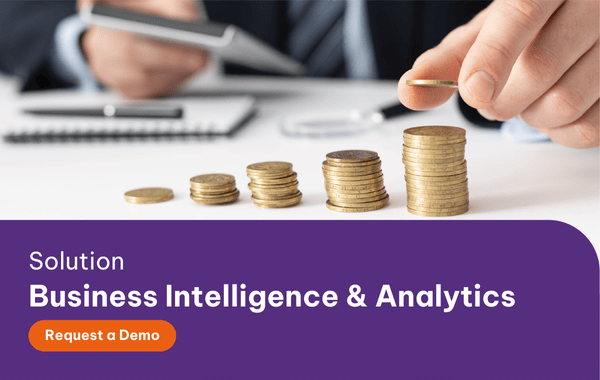Gartner’s 2008 CIOs survey highlighted that Business Intelligence (BI) is now one of the top priorities in business. BI is known to have positive impact on business performance of an enterprise, dramatically improving the ability to accomplish the mission by making timely and smart decisions at any level of the business.
Additionally, Forrester Research has provided a foreseeable future in their recent report that we are competing on information, where “all products and services continue to become more commoditised in our global economy”. As a results, if the two businesses share the same marketing personas and customer insight, the one who has earlier information will have significant advantages over the other. That’s why we need BI.
Modern BI and analytical tools – social interaction, mobility, cloud and technology – now have the ability to perform data democratisation throughout the business, thus combine individual capability for higher performance.

"An effective information network is like spider web. It gives the spider all movements of its prey to prepare for a good attack."
Building a BI strategy
Unfortunately, despite all technology innovations in data and information management, companies are still held back. Technological advancement is only on pace with a minority of businesses, while still keep a far distance ahead for others. Furthermore, BI challenges are based on not only the company size, but also its sophistication level around data analytics.
Most companies encounter the problem of integration in their BI strategy execution. As business grows, the organisation capabilities as well as changing technology base have left companies with complex system landscapes. They have so much data at hand that they don’t know where to start with, and have no idea to optimise the values of those data. They end up being overwhelmed by silos and have so little chance to manipulate the data into valuable information.
Case Study: How a Financial Shared Services Centre benefits from analytics software
However, middleware technology came out recently as a solution for integration problems. This technology is able to quickly and easily connect disparate systems into one whole, where companies can upgrade or even fail to execute without taking down all installed applications.
With integration forced into the picture, companies need to drive further to adopting additional BI strategies by their position on the evolutionary scale. Here are 3 common organisation categories and their identical BI strategy to empower organisational data management process.
1. Tactical
Definition: Companies focused on tracking and measuring projected business performance against actuals. They prioritise the need to meet basic reporting and regulatory requirements over assessing “how and why” of decision making. This action is time-consuming, a manual processes and an outdated technology.
Key strategies:
- Set clear goals for data analytic activities to get information and analytics controlled on one certain business area.
- Get buy-in from key stakeholders by including them from the beginning in the BI strategy process and providing them clear insight on how things change to avoid conflicts.
- Start small by identifying areas that are most affected because of lacking information or data and focus on solve the solution in that area only. This gives you solid foundation to expand your efforts.
2. Strategic
Definition: Companies use data to steer businesses rather than measuring the past business performance. They still rely on IT for the use of BI and analytical tools; thus limit the in-depth use of information.
Key strategies:
- Expand the availability of user-driven BI and analytical tools through the use of packaged BI solutions to reduce the dependence on your IT department.
- Reduce the amount of time that employees spend finding information and increase the analytical time to maximise the power of data and information.
- Provide a foundation for the long term by applying technologies that are flexible enough to adapt with the market while not change your organisation processes.
3. Driver
Definition: Companies master the art of collecting information and moved on to the process of how best to take advantage of it. They are working to put analytics to the hand of employees with BI and analytical tools. However, as the amount of data and information rise, these businesses must find the right path to manage all of it.
Key strategies:
- Investing emerging technologies that can take your BI efforts to the next level, which should include social business and big data to give your control on data democratisation as well as data management for better business performance.
Conclusion
Business Intelligence and analytics solutions are widely considered by CIOs and analysts in top organisations around the globe because of their capabilities to manage a great amount of data without frustrating your employee working process. By taking steps to data democratisation, companies can now put the power of information to the hand of any end-users, bottom-line get the most of information values and enhance business performance as a whole.
Request a Demo today to find out more information towards our Business Intelligence and analytics solution.
 English
English  Vietnamese
Vietnamese 


